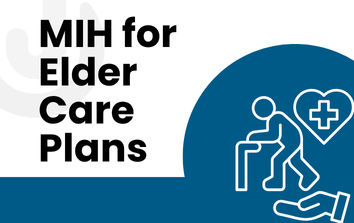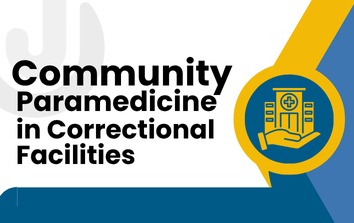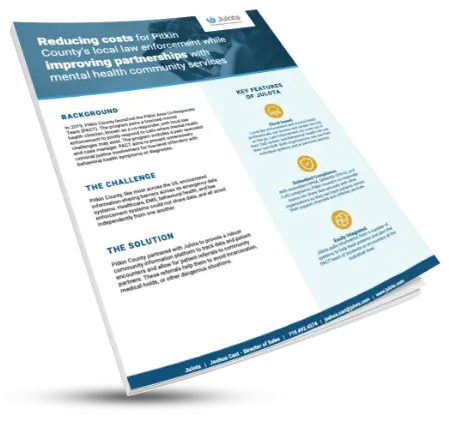Susan Lemere
Behavioral health crisis calls are complex and dynamic, often involving a combination of potential safety risks and health or social concerns. Some experts maintain that today, the crisis response landscape is more challenging than ever to navigate, for reasons such as increasing public scrutiny, rapidly changing laws and policies about behavioral health calls, and the launching and proliferation of new approaches to crisis response, which, as with anything new, often require adjustment, trial, and error. This article focuses on simulation training in co-response.

As the crisis response landscape evolves, so too do approaches to training first responders and their teams. This is especially true in the realm of simulation training.
Simulation training exposes first responders to realistic representations of real-life situations, enabling them to practice and refine their responses. In its earliest incarnation, it often took the form of learning exercises in which trainees considered how they would respond to hypothetical scenarios presented verbally or in written form by instructors.
These activities, although thought-provoking and designed to enhance trainees’ critical thinking skills in multi-faceted crisis situations, often lacked the sense of urgency and risk inherent in actual crisis calls, and also did not provide hands-on learning in the use of equipment and tactical positioning.
But as technology improved and became more widely available, so did the nature of simulation training. Increasingly, simulation training has begun utilizing technology such as live-fire simulators and virtual reality headsets.
These advances created virtual crisis situations that participants could see and hear unfold in real time, calling for on-the-spot decision-making about which actions, tools, and strategies might lead to the best outcomes in high-stress situations. And unlike actual crisis situations, virtual scenarios could be paused, stopped, and replayed, facilitating learning through instruction and/or debriefing.
For those unfamiliar with simulation training, the following is a description of two types of simulation training currently used by first responders: The Mobile Training Center in Massachusetts and the MILO system with FAAC, a division of the Aerotech Corporation.
A Tale of Two Simulation Training Programs
When Massachusetts law enforcement officers need simulation training, it often comes to them. That’s because the Mobile Training Center, owned and operated by the Middlesex Sheriff Department, is housed in its own trailer unit.
The Mobile Training Center’s system, called Laser Shot, presents officers with a variety of scenarios from a collection of more than 600, which are played, movie-like, on a screen, with the characters’ faces and appearances appearing to interact with the trainee. The training can include firearm practice, but also offers scenarios that call for the use of less lethal equipment or no equipment at all.
Participants get hands-on training using firearms loaded with less-powerful, firing range ammunition and inert pepper spray containers.
Since its inception in 2011, the Mobile Training Center has gained substantial popularity. A recent news article quoted Officer Ed Welch, who runs the training along with Officer Ryan Abrams, as having this to say: “Few places have the Laser Shot system, and only a handful have ones that can travel. The Middlesex Sheriff’s Office is the only one in Massachusetts. Because of that, he said, the Middlesex Sheriff’s trailer is booked through April 2026.”
The Mobile Training Unit is one example of what simulation training looks like in 2025. Another example can be found in the Multiple Interactive Learning Objective system, also known as MILO. MILO utilizes virtual reality technology to immerse participants in high-definition video scenarios.
Its Mental Health Response Training System is interactive, meaning the scenario outcomes are determined by the decisions made by police and co-responders. Participants and trainers can choose a library of some of the most common types of behavioral health calls, including welfare checks, calls involving suicidal individuals, disturbances in public places, and persons experiencing a post-traumatic stress disorder crisis.
Crisis Response Skills: What Are They and How Are They Learned and Practiced During Crisis Call Simulation Training?
Police are often the first to respond to behavioral health emergency calls. Hence, police and their co-response partners need to know how to handle these types of crises when they occur effectively. To appreciate how simulation training can help teach and reinforce crisis response skills, it is helpful to outline some of these skills.
Slowing things down
In crisis situations, there is often a sense of urgency that can lend itself to hasty decision-making. While some decisions do indeed need to be made quickly in a crisis, many situations still benefit from a more thoughtful and less emotionally charged response.
Simulation training helps co-responders practice slowing down when the situation allows, which can prevent further escalation of the problem and facilitate careful decision-making, consultation with others, and gathering additional pertinent information.
De-escalation strategies
De-escalation approaches include speaking more quietly when someone is emotionally distressed and engaging in active listening to understand the nature of the crisis. The individual(s) involved feel heard, and giving physical space when possible, if someone appears fearful, are essential skills to practice in a variety of simulated situations, so that opportunities for their use are more quickly and easily recognized and the actions themselves come more naturally.
Communication
Ensuring the most transparent communication possible between responders and individuals in crisis, as well as among team members, can take practice. Is the responder giving instructions in language that is unambiguous and easily understandable?
Are their words saying one thing while their non-verbal communication says another? Should a responder seek additional input, and if so, when and how? Effective communication skills are often key to responding effectively in a crisis situation.
Collaboration
Working as a team has many benefits, but it also presents challenges, and collaboration requires its own unique set of skills. For the sake of clarity, has a primary speaker been chosen so that only one person is doing the majority of talking to the person in crisis?
Are responders from different disciplines staying in their own roles and occupational lanes? Will anyone be tasked with obtaining collateral information, which can significantly enhance an understanding of the crisis situation at hand? The more a crisis response team works together, the more natural and collaborative the crisis response becomes.
Adequate and Appropriate Use of Equipment
In real-life crises, law enforcement officers have a variety of tools and equipment at their disposal, and determining which ones to use and when to use them takes practice. Simulation training enables officers to practice making these decisions on the spot and using or simulating the use of equipment as if the situation were unfolding in real-time. It also allows them to get feedback from instructors in low-stakes situations.
Performance Under Pressure
Stress inoculation, as the term is used in the law enforcement realm, refers to a process in which practicing tactics while experiencing stress improves one’s ability to perform under pressure later on (it reduces the effect that stress has on one’s use of knowledge or skills). A recent study attempted to measure the physiological stress responses of officers as they participated in simulation training.
The study showed that the virtual reality training did induce the kind of stress response one might exhibit in an actual high-stress situation, especially in less experienced officers.
Since simulation training has been shown to elicit the stress response in officer participants, the argument can be made that it is likely to provide stress inoculation, thereby increasing trainees’ ability to make informed decisions and take skillful action during actual crisis situations.
Simulation Training in 2025 and Beyond
Simulation training is a growing field that depends on evolving expertise and technology. While it is considered highly effective in its current form, new and anticipated developments are expected to enhance it in the future. Some trends in the improvement of simulation training may include:
A wider variety of scenarios and settings
As crisis response branches into more settings and populations and becomes more specialized, the need for a larger and more varied assortment of scenarios arises. For instance, as an increasing number of colleges utilize co-response models, it may be important to create more scenarios that reflect campus life.
Using Artificial Intelligence for Enhanced Interactivity
A recent article in Policing: A Journal of Policy and Practice considered how Artificial Intelligence may impact simulation training, making it even more interactive.
“With generative artificial intelligence making its way into our lives and now mimicking human behaviour better than before, the field of simulation is continually escalating in complexity. Future research could explore how artificial intelligence can be part of scenario development, such that it evolves dynamically according to officers’ actions within the exercise.” (Pei Jun See, Amanda Davies, How far have we advanced for simulation training in co-response?
Greater Emphasis on Team and Collaborative Response vs. Individual Response
As crisis response becomes increasingly collaborative, training that allows team participation is increasingly important. This highlights the need for more simulation training that can incorporate and respond to the involvement of multiple parties.
Simulation training in co-response has proven itself to be an effective tool in the toolbox of individuals and organizations concerned with community crisis response. With its emphasis on realism, interactivity, stress inoculation, instructor input, and variability, it prepares first responders to approach crisis calls with competence, confidence, and compassion.




